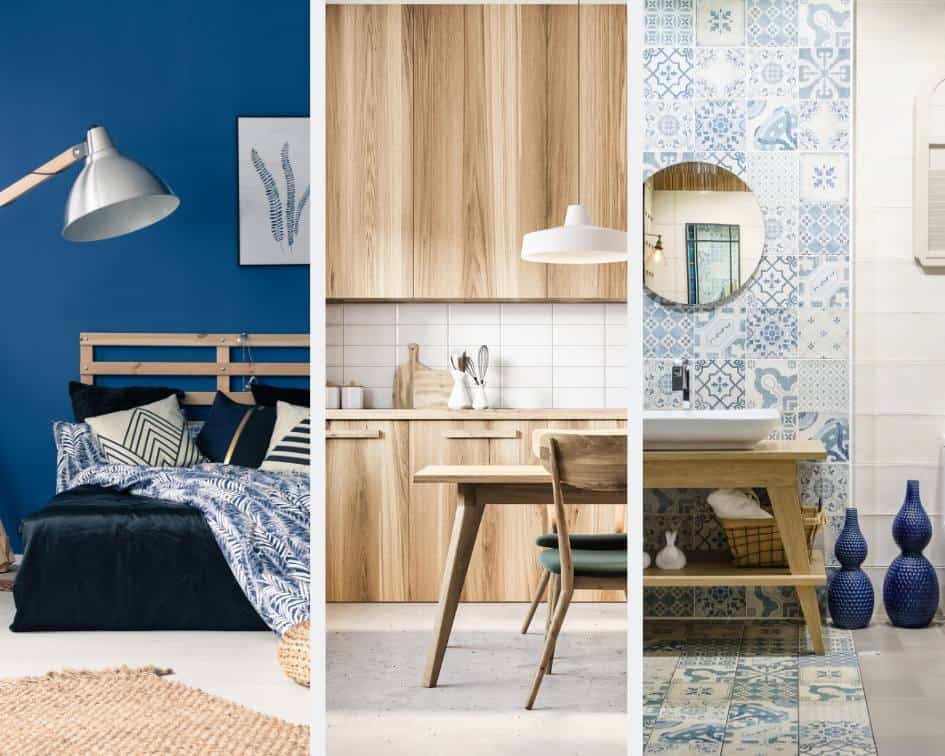Podcast: Play in new window | Download (Duration: 23:35 — 33.9MB) | Embed
Planning big purchases for your home this year? Knowing the best time to buy and planning ahead can save you big bucks on things for your home. In Episode 88 of The Architecture Happy Hour podcast, co-hosts and residential architects, Laura Davis and Holly Hall share the best times of the year to buy things for your home.
In this episode
- A month by month guide on the best time of year to buy things for your home
- Linens, bedding
- Carpet, flooring
- Home decor, furniture
- Televisions, electronics
- China, flatware
- Cookware, kitchen accessories
- Paint
- Patio Furniture
- Appliances
- Holiday and seasonal items
Home Design Tips
- Our favorite apps/websites that make shopping and saving faster and easier
- Rakuten.com
- Flipp.com
- Wikibuy.com
- Camelcamelcamel.com
- Smile.amazon.com
- Store apps price scan
What is the Best Time of Year to Buy…?
Large Appliances: September, October, and January
This is when manufacturers roll out new home appliance models, and retailers are eager to move last year’s inventory. (Refrigerators are the exception. New models come out in the spring.)
Also, Thursdays are a good day because it’s before the weekend and the weekend rush when aisles are less crowded. The last days of the month are also good because stores are desperate to meet quotas and are more likely to dicker over prices.
- air conditioners & gas grills: Fall & winter because few buyers think about warm-weather appliances when leaves and snow cover the ground.
- dishwashers: December because they are much cheaper at the end of the year.
Indoor Furniture: July
While January is also a great month to buy furniture (post-Christmas sales, new styles are released in February, etc.), July wins out over January because: Bringing your furniture home in snowy weather conditions is difficult. Overall furniture sales are down in the summer making the discounts go up.
Office Furniture: January, after tax season & July
Furniture styles are updated twice a year usually between February and August. This is a great time to take advantage of price cuts as stores make room for new inventory. Also look into any discounts on floor models.
office supplies: August
computers: July
July is typically a slow month for computer sales—before the back-to-school rush—so you can often find some great deals!
Outdoor Furniture: August to October
Stores begin clearing out their summer items in July & August to make room for their fall inventory. Generally, the further from summer, the higher the savings on patio furniture. In early August, sales are approximately 20 percent off.
gardening tools: February to April
Save up to 50 percent on shovels, hoes, rakes and other gardening tools during these months.
lawnmowers: April, May, August, September & October (per Consumer Reports).
One popular school of thought is that it’s best to buy a mower right after mowing season ends.
picnic & barbecue supplies: mid-May & June
In anticipation of the summer grilling and picnic season, retailers want to sell their stuff, so you’ll find deep discounts on these types of items.
swing sets: August
Since swing sets take up a lot of floor space and lose their popularity after kids go back to school, August is a popular month for sales.
above ground swimming pools: December to February
The off-season is the best time to buy. Some retailers will offer incentives to “early planners’ who purchase their pools in December/January/February.
Carpets, Flooring & Linens: January
Wait until January when prices have been lowered to move inventory. You can also often find a “white sale” on linens at the beginning of the year.
Home Décor: January
Some people like to redecorate in January to create a new look for the new year. So be on the lookout for sales and discounts at large retailers selling off last year’s looks.
Cookware & Kitchen Essentials: Late Spring/Early Summer
Stores sometimes run sales on cookware and kitchen essentials in late spring/early summer because it is a popular gift for newlyweds and graduating college students.
China & Flatware: after Christmas and in March
Look for deals on the previous seasons’ patterns. This is a great time for newlyweds to pick up china and flatware.
Luggage: March
You can find great deals on last year’s luggage in March when newer styles are arriving in anticipation of summer travel.
Baby Furniture and Supplies: November
Consumer Reports says that November is usually the best time to buy baby items.
Mattresses: Late Winter/Early Spring
Retailers offer discounts between February and May to make room for new models. Holiday weekends such as President’s Day, Memorial Day, Fourth of July, Labor Day and Black Friday are also great times. Purchasing online anytime will also save you around 50-60 percent.
Power Tools: June & November
Father’s Day sales typically surface towards the beginning of June. Keep an eye on home improvement stores that are competing for your Father’s Day purchases. Expect to save between 15 and 30 percent on sale items. Black Friday and Cyber Monday are also great times to buy power tools (provided you can tolerate the long lines and rude customers). You can save between 30 and 50 percent off the suggested retail price.
Televisions and Home Theaters: The first week of January
This is typically a good time because the Super Bowl brings out the best deals on both big-screen TVs and home theaters. Also consider these suggested buying times:
- Late March and early April
- Black Friday
- 26th
- Annually on Amazon Prime Day
electronics: spring & summer
The Japanese fiscal year ends during spring and summer, so most electronics companies will release their new models after that new fiscal year, and old models will be reduced in price.
videogames & toys: November & December / January & February
New video games and toys are released in November and December to be available in time for Christmas. After Christmas, toy and video game stores will mark down older games while also selling off their overstocked items.
snowblowers & other winter equipment: Springtime
You’ll get the best deals during spring when winter equipment is not needed.
vacuum cleaners: April
New models are released in time for spring cleaning and that results in lower prices on older models.
paint: June
The hottest months of the year produce the greatest sales on both interior and exterior paint.
SOURCES:
Architecture Podcast Sponsorship / Guest Opportunities
Are you interested in sponsoring The Architecture Happy Hour podcast?
We want to connect with companies that are a good match with the interest of our listeners.
Please complete the Sponsorship section of our Contact Form and we will be in touch.
Laura Davis is a registered architect and interior designer in the state of Texas and Colorado, and a founding member of hpd architecture + interiors. Laura's extensive experience includes residential as well as commercial and retail projects. She also has a particular interest in restoration, holding a certificate in Historic Preservation. She is energized by the character of older homes and the stories of those who have lived there. Responding to the needs of the current owner, while also honoring the personality of the original home is a delicate process to be enjoyed.

